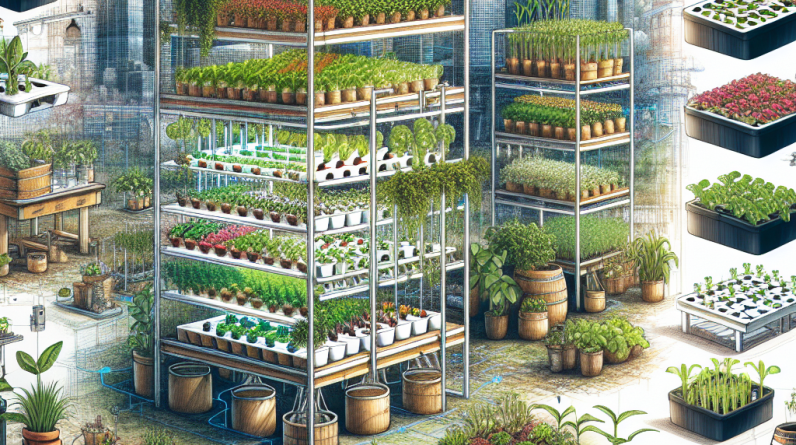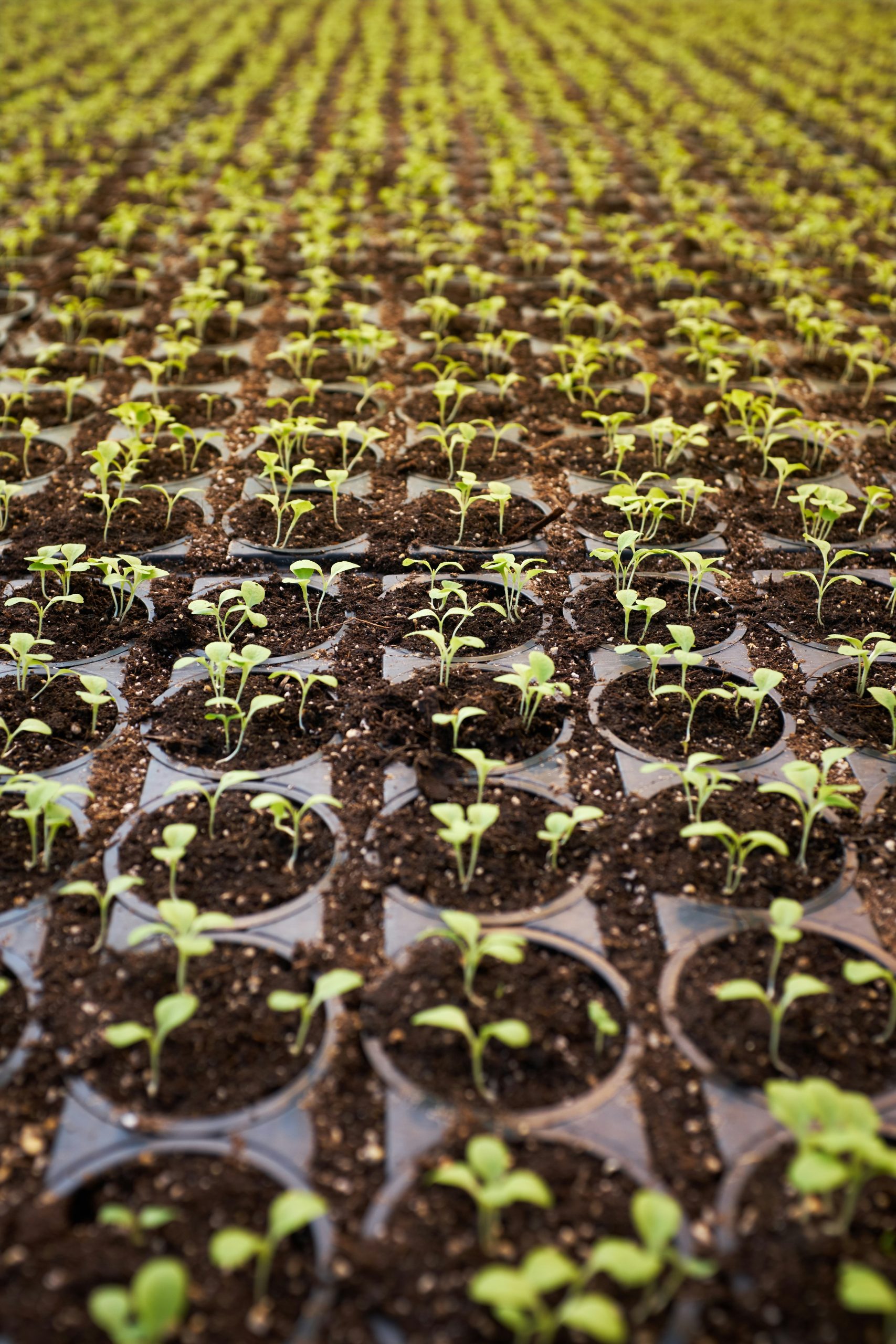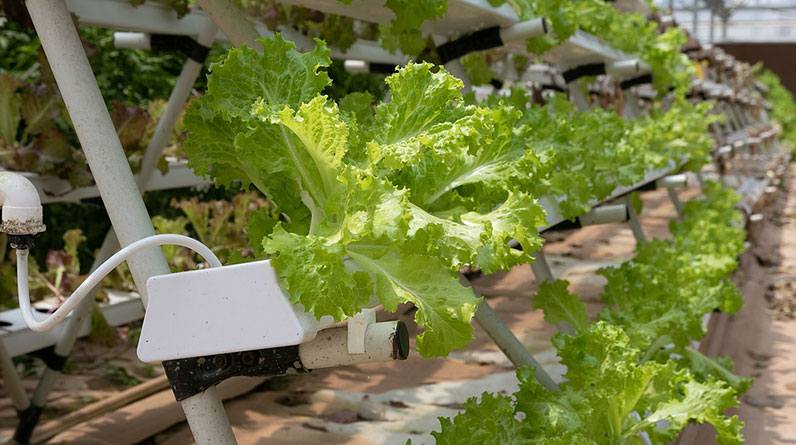
Understanding Your Hydroponic System
Types of Hydroponic Systems
When I first started my hydroponic journey, I was amazed by the variety of systems available. There are several types, like Nutrient Film Technique (NFT), Deep Water Culture (DWC), and Aeroponics. Each of these systems works differently and has distinct advantages. For instance, with NFT, the water constantly flows over the plant roots, making it quite efficient in nutrient use and oxygen delivery.
Choosing the right system is crucial if you want sensors to work effectively. If you have a DWC setup, you may need different sensors compared to an NFT system. Make sure to research which sensors best fit your specific hydroponic method, so you can really harness their full potential.
In my experience, starting simple is always the best approach. You don’t need to overcomplicate things right at the beginning. Choose one system, get comfortable with it, and then you can always upgrade or expand later on.
The Role of Sensors in Hydroponics
Sensors are a game-changer when it comes to optimizing hydroponic farming. They help you monitor critical variables such as pH, nutrient levels, and moisture. From my own experience, I can tell you that getting this data in real time can make all the difference. It’s like having a personal assistant that alerts you if something is off!
For instance, if your sensors detect a drop in pH, you can quickly make the necessary adjustments to correct it before it affects your plants. This proactive approach has saved my crop more than once and has increased my yields significantly.
Moreover, sensors can also help automate certain processes. With enough monitoring, you can set up automated systems that adjust nutrient delivery based on what the sensors detect, ensuring that your plants are always getting what they need.
Data Collection and Management
Having sensors is one thing, but managing the data they produce is another challenge. When I first started, I felt overwhelmed by the sheer amount of data at my fingertips. The key is to invest time in organizing and interpreting this information effectively.
I recommend using software that can consolidate this data into easy-to-read graphs and alerts. This makes it much easier to spot trends over time, allowing you to fine-tune your growing process continually. It’s like having a dashboard for your plants!
Don’t forget that you can also share this data with other growers or use online forums to discuss insights. Collaboration in the hydroponics community can lead to the discovery of new techniques and tips that you might not have thought of on your own!
Setting Up Sensor Systems
Choosing the Right Sensors
The selection of sensors really hinge on the specific requirements of your hydroponic system. For example, if you’re focused on nutrient management, you’d want a good EC (Electrical Conductivity) sensor. From my experience, investing in quality sensors upfront can save you a lot of headaches down the road.
I remember the first time I bought cheap sensors that kept failing or giving inaccurate readings. After a few frustrating months, I finally learned – you get what you pay for! Choose durable, reliable sensors so you can trust the feedback they provide.
Also, remember that compatibility with your existing system is vital. Ensure that the sensors you choose can integrate with other technologies you have in place, like your pumps or lighting system. It makes the entire process smoother.
Installation Tips
Installing your sensors can sound daunting, but it’s often more straightforward than it appears. Most sensors will come with clear instructions, but I suggest taking your time to understand where each one should be installed for maximal effectiveness.
For instance, placing a pH sensor in a low-flow area could lead to incorrect readings. Aim for strategic placement, where each sensor can accurately monitor its specific variable. Don’t hesitate to experiment a bit until you find the best spots!
Once installed, don’t forget to regularly check that they are functioning correctly. A little routine maintenance can go a long way in ensuring your hydroponics are optimized and that you’re not blissfully unaware of an issue brewing under the surface!
Calibration and Maintenance
Regularly calibrating your sensors is like giving them a check-up. During my early days, I would neglect this step, and it caused so many misreadings. For example, my pH sensor displayed that everything was fine while it was actually way off. Trust me, calibrating at least once a month makes a big difference.
Different sensors require different calibration processes, so familiarize yourself with the specific needs of each one. Follow the manufacturer’s guidelines for the best results. It’s often a quick process, and it will help prolong the life of your sensors.
Also, cleaning your sensors regularly is essential. Residue from nutrients or algae buildup can affect their readings. A simple cleaning every now and then can keep your sensors operating at peak performance.
Integrating Sensors with Automation
Types of Automation in Hydroponics
When I talk about automation in hydroponics, I’m referring to the various ways you can use technology to streamline operations. You can set up automated nutrient delivery systems, lighting schedules, or even climate control systems based on the readings from your sensors.
Honestly, automation has been a game changer for me. It not only saves time but also ensures that your plants are getting what they need without constant manual adjustments. It’s like having a reliable assistant working for you 24/7.
Each automation type can involve its own specific sensors. For instance, if you automate your climate control, you might need temperature and humidity sensors. Always consider how each sensor will integrate into your existing systems for a seamless experience.
Setting Up an Automated System
Starting an automated system can seem overwhelming at first, but it’s a lot simpler than it appears. I began with just automating nutrient delivery based on my EC sensor’s readings, and then gradually added more automation features as I got comfortable.
When setting up, make sure to start small. Once your first automated task is running smoothly, then you can consider adding more functions one at a time. This allows you to refine each process, ensuring everything works harmoniously together.
Don’t forget about software! A good automation software should provide a user-friendly interface where you can monitor and adjust all the automations you’ve set up. Trust me, having everything in one place makes troubleshooting so much easier!
Monitoring and Adjusting Automation
Once your automation is up and running, monitoring how it performs is essential. Log into your system regularly to check how well it’s functioning. Periodically compare the automated outputs against manual checks. This will help you understand if your system requires adjustments.
If you find discrepancies, don’t hesitate to tweak automation settings. This is a common step in refining the process. For instance, if your plants are still droopy despite the nutrient delivery system running, it might be time to adjust dosage or timing.
Lastly, stay engaged with any communities on hydroponic automation. Other growers often share their experiences and troubleshooting tips, which can be incredibly valuable as you refine and perfect your own automated systems. Community knowledge is a goldmine!
Evolving Your Farming Practices
Analyzing Data for Continuous Improvement
Continuous improvement is what keeps hydroponic farming exciting. I love looking back at my collected data and spotting trends or correlations. For example, I noticed that my plants grew significantly better when I fine-tuned my nutrient delivery based on their growth stages.
Keep a journal or digital log of significant findings. Over time, you will see patterns that inform how you manage your hydroponic system. This not only helps with current crops but also sets you up for future success.
Don’t be afraid to experiment based on this data. Sometimes, the best discoveries come from trying something new or going against conventional wisdom. Always keep an open mind and adjust your methods based on what your plants are telling you!
Community Insights and Collaboration
The hydroponics community is filled with so many knowledgeable people. Engaging with others who are just as passionate about hydroponics can open up doors to new ideas and insights you may not have considered. I’ve gained so much just by sharing my trials and errors with fellow gardeners.
Consider joining online forums, attending workshops, or even local meetups. These are great opportunities to ask others how they’ve tackled challenges, what sensors they’ve had success with, and any automation tricks they’ve learned.
Remember, we’re all in this together. Building a supportive network can assist not only in technical aspects but also in maintaining motivation. Having others to share successes and failures with makes the journey that much more enjoyable!
Future-proofing Your Farm
As technology rapidly evolves, there’s always something new on the horizon in hydroponics. From more advanced sensors to AI-based monitoring systems, staying updated is vital if you want to maximize your hydroponic success.
Consider investing in scalable technology—something that will allow your operations to grow as your expertise increases. When I upgraded my system’s sensors, I chose ones that could serve multiple purposes and adapt to new farming techniques.
Always stay curious and open to learning new methods. The world of hydroponics is ever-changing, and keeping your ear to the ground will ensure your practices stay relevant and productive. Who knows what innovations could be around the corner?
FAQ
What type of sensors should I use for my hydroponic system?
The type of sensors you should use depends on the specific parameters you want to monitor. Common sensors include pH sensors, EC sensors for nutrient monitoring, temperature, and humidity sensors. It’s best to choose sensors that fit the specific needs of your hydroponic setup.
How often should I calibrate my sensors?
As a rule of thumb, you should calibrate your sensors at least once a month. However, if you notice any discrepancies or severe shifts in your plants’ conditions, it’s wise to calibrate them immediately.
Can I automate my entire hydroponic system with sensors?
Yes! You can certainly set up automation for various functions in your hydroponic system, including nutrient delivery, climate control, and lighting schedules. The key is to start small and gradually build up as you become comfortable with the system.
What are the benefits of using sensors in hydroponic farming?
Sensors provide real-time monitoring of vital plant conditions, which can lead to informed decision-making. They help maintain optimal growing environments, automate various tasks, and ultimately can lead to higher yields and healthier plants.
How can I start learning more about hydroponic sensors and automation?
Consider joining online communities, reading books, or attending workshops focused on hydroponics. Engaging with experienced growers and staying updated on the latest technologies can greatly enhance your understanding and skills in utilizing sensors and automation.







